Paseo de Montejo Statues
The Statues Emerge
As hurricane season dawned in Merida, we noticed that workers were gathering each day at the remate, (the south end of Paseo de Montejo), building something. At first we thought they were building a fountain. Then, as the pedestal took shape, it became apparent that they were building a statue pedestal similar to the ones farther north on the avenue that supports statues to Felipe Carrillo Puerto, Dr. Justo Sierra and near the Gran Plaza, Gonzalez Guerrero.
Then one day, there were statues there, but they were veiled.
Fade out statues, fade in Bicentennial/Centennial countdown clock even farther north on the same avenue, reminding everyone that there are only 54 (or whatever) shopping days until the twin celebrations of 100 years since the Mexican Revolution (against the reigning oligarchy) and 200 years since Mexico's Independence from Spain this year. The countdown clock reminder is one of many scattered throughout Mexico in every city of any size, as this is a nationwide celebration. We would draw parallels to the Bicentennial celebration in the United States a few decades ago, with its fireworks displays and red-white-and-blue mania. But the parallels would go hyperbolic at this point because not only is Mexico celebrating TWIN centennials, but no one knows how to throw a party like Mexico. Yes, we know that could be taken as stereotyping, but we'll make an exception in this case because in Mexico, fiestas are the national pasttime.
Now, you may have noticed that these centennial celebrations tend to be celebrations in honor of Lady Liberty. Certainly, the American Bicentennial was all about throwing off the shackles of monarchy and celebrating 200 years of freedom and democracy. Here in Mexico, the celebrations will be about freeing Mexico from Spanish colonial authority and, 100 years later, freeing Mexicans from the autocratic rule of Porfirio Diaz.
Viva México! Viva La Revolución!
So imagine our surprise when the only statues erected in Merida this banner year, in one of the most visible and central spots in the city of Merida, in the year of the twin centennials, turned out to be fairly realistic renditions of old Francisco de Montejo himself and his son of the same name, together the two conquistadores who conquered the Maya city of T'ho and renamed it Mérida in 1542 after a city in their home country of Spain.
The statues were sculpted by Reynaldo Bolio Suárez, for a purported cost of $143,485.96 pesos (give or take a centavo). If you disregard the political overtones of the work, the statues themselves are professionally done and some of the best work on public display in this city (we would argue that the statue of Pedro Infante on Calle 90 is much more interesting). The details are well-crafted and the figures are well proportioned, though they strike us as a bit small in relation to the pedestal on which they stand, which could be seen, perhaps, as a veiled commentary on the regard in which they are held and how it may or may not be deserved.
Why Them? Why Now?
The question burning in everyone's mind, however, is why? Why these guys? And certainly, why now?
Our research turned up the facts that a local historian, Juan Francisco Peón Ancona, was instrumental in convincing the outgoing mayor of Merida, Cesar Bojorquez, to erect these statues. He was aided by the Patronato Prohistoria Peninsular, a group of citizens who take personal and professional interest in the history of the Yucatan Peninsula. These citizens all felt that a statue should be erected to the man or men who they say founded the city of Merida, but who also were responsible for building many of its major architectural attractions, and after whom the main avenue on which they stand is named. It seemed to them a gross error that a statue of these adventurous men was missing from this city.
Again, we can imagine that this took years to produce, and perhaps the timing of the end point of the entire production was not well thought through. In our minds and heart, we can cut them some slack.
We also know that many years ago, on the quatrocentennial of Merida's founding as a city (1942), the government erected a statue of Nachi Cocom (an important Mayan ruler at the time of the conquest) on this same avenue, and the avenue was renamed after him. At that time, apparently, there was a big uproar and, according to historian Peón Ancona writing in the Diario de Yucatan, "The rejection of the public was immediate and unanimous ... (I still) remember those "brand new" concrete monoliths with the name of indigenous leader, shot down in the night, on the Paseo, with ropes and chains, groups of boys and even older people, in manifest and clear rejection of the unfortunate disposition of local government". Apparently, some people were upset.
A distant acquaintance of ours, Genner Llanes Ortiz, a Yucatecan who is currently living in Brighton, England and recently completed his PhD in Anthropology at the University of Sussex, calls for an end to this monoculturalistic attitude on either side of the proverbial fence. He feels it is time for Merida to truly embrace its multicultural roots... and that perhaps these statues are not a good start in that endeavor.
Backlash
Certainly, the response to the statues was swift and vituperative on the part of many. First, there were the personal reactions. "Did you see those statues?" and "What were they thinking?", "Why would that do that this year of all years?". And these were just some reactions of the extranjeros that we know... perhaps our Yucatecan friends are too circumspect to vocalize their response quite so quickly or obviously. Although, to be honest, a lot of well-heeled Meridanos probably didn't even see the statues for weeks, as they rarely travel to the Centro. But we saw them right away. And so did the working class of Merida, the Mayans visiting from the pueblos and the students and other youth that congregate in the universities, colleges and coffee houses downtown.
A protest was scheduled a few weeks after the unveiling. The day after the protest, hand-written signs hung on the statue base, punctuated by paper maché feet and hands, painted white and red to symbolize the bloody hands and feet of the Mayan workers in the henequen fields. A week after that, a group gathered and presented a formal letter to the Ayuntamiento (City Hall) of Merida. Among other things, the letter pointed out that the arrival of the Spanish to the land of Mexico brought death and cultural destruction to the people living here, that this behavior should not stand as a model, that the invasion of the Yucatan was particularly violent, that the Constitution of United Mexican States decries discrimination of any kind, and that the same Constitution establishes Mexico as a multicultural country. The letter also points out that the local Yucatecan Constitution provides that Yucatan is a multicultural state, based on the indigenous Mayan people, and that "in this context to erect a statue to two of the most bloodthirsty invaders who Yucatan history has known... is an act of propaganda of racism and discrimination that our fundamental laws prohibit...". The letter calls for the immediate removal of the statues, as well as the appointment of a woman to one of the four cronista posts (official historians of the city, now all held by men), that the city put out a call to all the citizens of the city to see who they want a statue of, to rename the avenue to Bicentennial Avenue and that the city honor and celebrate ALL of the inhabitants of Merida-T'ho in this important year.
Where The Statues Still Stand
To this day, the statues are still standing, overlooking the vast avenue named after the men they pay tribute to. The outgoing mayor approved the building and erection of the statues, erected less than three weeks after the new mayor took office.
The new mayor is a woman (Angelica Araujo Lara) and of a different, more liberal political bent than Cesar Bojorquez, the previous mayor. Perhaps she will pay heed to the letter, and the people who undoubtedly voted her into office. Or maybe, she will not fight this battle, letting the more entrenched powers that started this process have and keep their statues where they want them. There are few statues erected in Mexico to the conquerors from Spain. Maybe Merida will buck the trend, and maybe it will not.
We are part of the multicultural city that is Merida. On principal, we support multiculturalism. But in this battle to declare who the true founders were of Merida, and who should be remembered, commemorated and put on a pedestal, we must remain on the proverbial sidelines.
*****
See the full text of the letter presented to the Ayuntamiento here. (translated with the help of Google Translate)
See an image of the letter with signatures here.
Article by historian Juan Francisco Peón Ancona in the Diario de Yucatan (translated by Google Translate)
Detailed and well-researched blog by Genner Llaner Ortiz, native Yucatecan and PhD in anthropology, recently graduated from University of Sussex in Brighton, England (also translated by Google Translate)
The recent AP article about the statues.




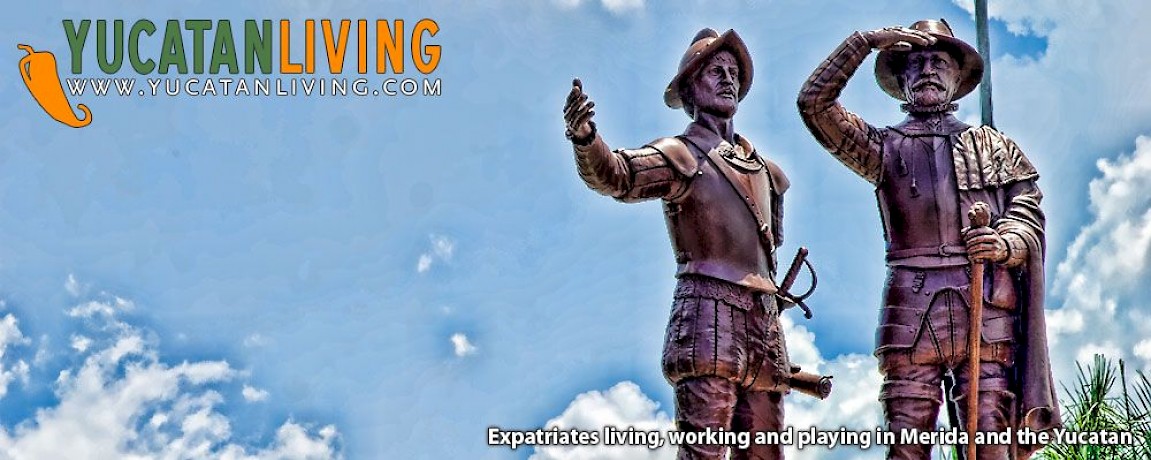


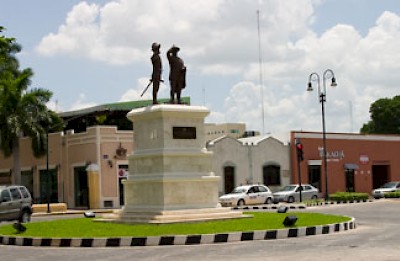
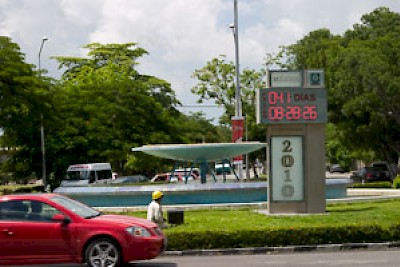
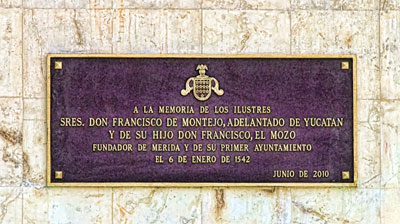
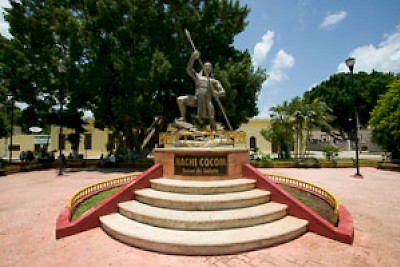
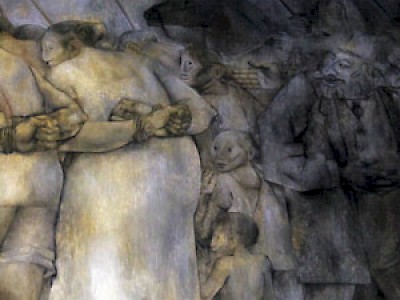
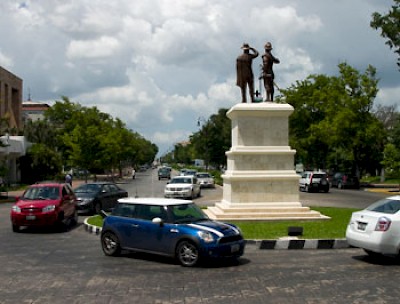

Comments
José Repetto 15 years ago
They didn't rename T'ho, they destroyed it and build our beautiful city with and over its ruins.
The statue still stands and will continue to stand, because many of us are grateful that the spanish conquest took place. Thanks to it we speak one of the most beautiful languages in the world and we are a part of the western civilization.
Don't be fooled, the opposition to this monument is not representative of the city.
By the way, freedom and democracy in Mexico? ...
Reply
Franz J Fortuny 15 years ago
The history of our species is one of colonizing and conquering. The results of the actions of colonization is occupation of a territory and exploitation of its "natural" resources. The result of conquest is also the occupation of the territory that USED TO BE occupied by another human group that is DEFEATED. In the case of the Spaniards in Mexico, the original occupants were defeated in battles and then biologically assimilated by the mixing of the races, creating the Mexican of today: neither European (Spaniard) nor American (Aztec, Mayan, Toltec, Olmec, etc). As always, some have more "Indian" genes and some have more European genes. But they all carry an IFE identity card and have the same right to vote, to public schools, hospitals, freedom of speech, religion, etc. It should not be offensive to any Mexican to see a statue that reminds where some of the genes he/she is carrying come from. I don't know if the Nachi Cocom statue is as representative of conquest and occupation as that of the Montejos, but the fact is that statues of all sorts of men and women WHO CAUSED things to follow the path that has brought us to the present day Mexico should be of no consequence to any mentally healthy and politically understanding individual.
Reply
Beryl G 15 years ago
Thank you YL for writing a great piece on this controversy and to CasiYucateco for historic perspective.
I realize that these issues are none of our business, as foreigners, but I am delighted that there is local objection to these statues. I'm not sure that would have happened twenty years ago.
Reply
Hubert Smith 15 years ago
"Nachi Cocom"!
Now there is a story.
Reply
Hubert Smith 15 years ago
I vote for the Maya's long-standing attitude of "contempt-by-neglect."
Name a beer after Montejo, hang his moniker on a subdivision, let him and his kid remain on their house's facade caught in their act of monumental hubris.
Royal Spain is long gone, a modern Yucatec state has emerged. To be sure, a million Maya remain in the countryside calmly hewing to challenging lives. Yet nobility is where you find it and few would argue that the modern Maya lack it.
Reply
CasiYucateco 15 years ago
Actually, no comparison was made between the Sioux and the Maya. An illustration was made for those who may not fully understand the controversy, i.e., foreigners like me, or others who need a reference point. In providing that illustration, the Sioux were used as one group with whom Norte Americanos would be familiar and Custer did a valiant stand-in for Montejo, but oh, too blonde.
Curse the blondness of it all! My mistake in casting!
From the objections being raised by actual Mexicans, it appears that the "we are all one anyway so it doesn't matter" concept has yet to win over the whole country.
I'd love to hear more about the "perspective of the historical moment at that time" so I could see what's been missing. Is there some reason the word conquest is in quotes? Was there no 'conquest' and we are sadly misinformed as to history?
Could it be that the carving of Montejo standing on the screaming heads of Mayas at Casa Montejo is simply being seen through 21st century eyes and moral points of view? Yes, yes, I see it now: they are not screaming in pain and anguish. They are crying out for joy! I've missed it all these years... Someone quick - please stand on my head! There's more to be learned!
Reply
Working Gringos 15 years ago
That is a portion of a painting that can be seen upstairs in the front gallery at the Governor's Palace on the corner of Calle 60 and Calle 61. It is free and open to the public, and is one of many paintings in the building about the history of the Yucatan painted by Fernando Castro Pacheco (more about him here: http://en.wikipedia.org/wiki/Fernando_Castro_Pacheco)
Reply
Mary Lou Martin 15 years ago
What is that beautiful painting you pictured on the left side of your article, who painted it, and where can it be viewed?
Many thanks for your always interesting newsletters.
Reply
fabio fortuna 15 years ago
it is though quite misleading to compare the impact of the conquistadores in a country like Mexico, with the impact on the Sioux or other tribes in the North. Most Mexicans are aware, I believe, that they are the result of interbreeding between conquistadores and local population, which is really not the case in the US and Canada. the simple story of Malinche and similar 'legends' with historical background illustrates these facts. Reality is more complex, as Mayans were never united in a 'nation-state' or 'empire' and their city state- social political structure was at loss. I am not trying to 'justify' the impact of the 'conquest', and i do understand it is a controversial matter in Mexico generally speaking and in the Mayan regions specifically, but I believe things have to be seen in perspective of the historical moment at that time, and cannot be judged with the 21st century 'eyes' and moral points of view.
Reply
mcm 15 years ago
I"d like to add a more direct link to the series of articles in the Noticias de Yucatan blog: http://www.noticiasmerida.org/search/label/Monumento%20a%20los%20Montejo
Reply
mcm 15 years ago
I'm glad that YL brought this topic up -- It's received a lot of coverage in the local papers, and the argument (which has received fairly even-handed coverage in the Diario de Yucatan) does provide an interesting window on the politics of culture (or the culture of politics) here in Yucatan.
For an interesting series of thoughtful discussions of this topic, in Spanish, I suggest that those interested read the posts from July and early August on the "Noticias de Merida" blog -- http://www.noticiasmerida.org/
PS -- I'm NOT suggesting that YL's article does this, but I do think there's a danger in equating the actions of a small group of activists (on either side of an issue) with "popular" opinion.
PS2 -- I do think that your characterization of the current mayor as "more liberal" than the outgoing Mayor is a little misleading (equating the PRI with a more "liberal" point of view than the PAN). Yes, the current mayor is more populist in her approach, but that's a different thing (in my view, anyway).
Reply
(0 to 11 comments)Next »